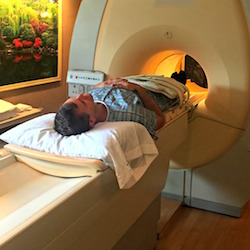Elevated PSA? Know Your Options
 Prostate cancer is a very common condition affecting men, primarily those over the age of 65. The American Cancer Society estimates 161,000 new cases of the disease will be diagnosed in 2017. Fortunately, prostate cancer is usually slow growing and does not present a major health hazard to most men.
Prostate cancer is a very common condition affecting men, primarily those over the age of 65. The American Cancer Society estimates 161,000 new cases of the disease will be diagnosed in 2017. Fortunately, prostate cancer is usually slow growing and does not present a major health hazard to most men.
Prostate cancer is often found through routine screening or when a man presents in his physician’s office with complaints of weak urine stream, difficulty initiating urination, pelvic pain, erectile dysfunction, the inability to empty the bladder completely, or an urge to urinate frequently.
A digital rectal exam (DRE), is the most commonly performed screening exam. During the DRE, the physician uses a gloved, lubricated finger to feel the prostate, searching for lumps and other abnormalities. A simple blood test, called a Prostate Specific Antigen (PSA) test, can detect elevated levels that may suggest cancer. Men with a PSA between four and 10 have a 25 percent chance of having cancer; a PSA level above 10 increases the risk to 50 percent.
The next step in diagnosing prostate cancer is typically a biopsy. During this procedure, a hollow core needle is inserted into the prostate through the rectum to retrieve tissue samples. Typically, 12 to 15 random samples are taken. Patients often receive numbing medication, but it’s important to ask.
Although the biopsy is straightforward and often performed in the office setting, it carries with it the risk of serious infection, bleeding and even very rarely death. Men experience soreness for several days following the biopsy and may also have bleeding from the rectum, and blood in the urine and semen. Antibiotics may be prescribed for one to two days following the test.
Biopsy results typically take several days to be available and there is always a risk of false-negative results, as detecting cancer is dependent upon a needle passing through the suspicious cells. As a result, the patient may receive an all-clear when in fact cancer is present. If your physician feels strongly there may be cancer, a second biopsy may be ordered.
An alternative to biopsy
If biopsy sounds painful, risky, inconvenient and uncertain, there is an alternative: prostate MRI. Prostate MRI produces detailed images of the prostate, using strong magnets, radio waves and a contrast material called gadolinium. Looking at these images, the radiologist can help diagnose prostate cancer and see whether the cancer has spread outside of the prostate, said Jason Harris, M.D., medical director at Lexington Diagnostic Center and Open MRI.
Not only is prostate MRI much more comfortable for the man, it provides better anatomic and physiologic information, more quickly, he noted. A prostate MRI can determine a tumor’s size, location and likelihood of malignancy. If an area is identified that looks suspicious, a more targeted biopsy can be performed and a rational treatment plan designed.
There are no risks with prostate MRI, although patients will undergo a safety screening to ensure there are no metal implants or devices in the body that are incompatible with the procedure. Testing takes about an hour, and men can resume their normal daily activities quickly. Patients who experience claustrophobia may receive an IV sedative to ensure their comfort.
Lexington Diagnostic Center provides prostate MRI services using its 3 Tesla Multi-parametric MRI. Men leave the center with a disc of their images and peace of mind.
